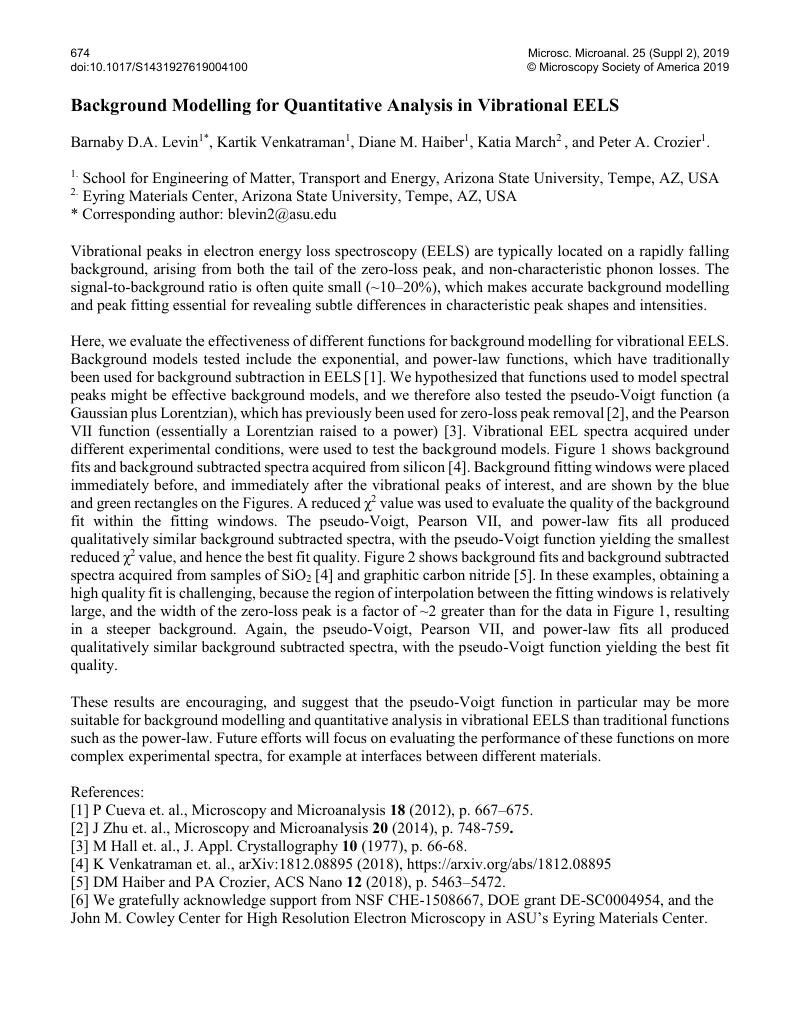Crossref Citations
This article has been cited by the following publications. This list is generated based on data provided by Crossref.
Qi, Ruishi
Li, Ning
Du, Jinlong
Shi, Ruochen
Huang, Yang
Yang, Xiaoxia
Liu, Lei
Xu, Zhi
Dai, Qing
Yu, Dapeng
and
Gao, Peng
2021.
Four-dimensional vibrational spectroscopy for nanoscale mapping of phonon dispersion in BN nanotubes.
Nature Communications,
Vol. 12,
Issue. 1,
Venkatraman, Kartik
and
Crozier, Peter A.
2021.
Role of Convergence and Collection Angles in the Excitation of Long- and Short-Wavelength Phonons with Vibrational Electron Energy-Loss Spectroscopy.
Microscopy and Microanalysis,
Vol. 27,
Issue. 5,
p.
1069.
Susarla, Sandhya
Naik, Mit H.
Blach, Daria D.
Zipfel, Jonas
Taniguchi, Takashi
Watanabe, Kenji
Huang, Libai
Ramesh, Ramamoorthy
da Jornada, Felipe H.
Louie, Steven G.
Ercius, Peter
and
Raja, Archana
2022.
Hyperspectral imaging of exciton confinement within a moiré unit cell with a subnanometer electron probe.
Science,
Vol. 378,
Issue. 6625,
p.
1235.
Li, Yue-Hui
Qi, Rui-Shi
Shi, Ruo-Chen
Hu, Jian-Nan
Liu, Zhe-Tong
Sun, Yuan-Wei
Li, Ming-Qiang
Li, Ning
Song, Can-Li
Wang, Lai
Hao, Zhi-Biao
Luo, Yi
Xue, Qi-Kun
Ma, Xu-Cun
and
Gao, Peng
2022.
Atomic-scale probing of heterointerface phonon bridges in nitride semiconductor.
Proceedings of the National Academy of Sciences,
Vol. 119,
Issue. 8,



